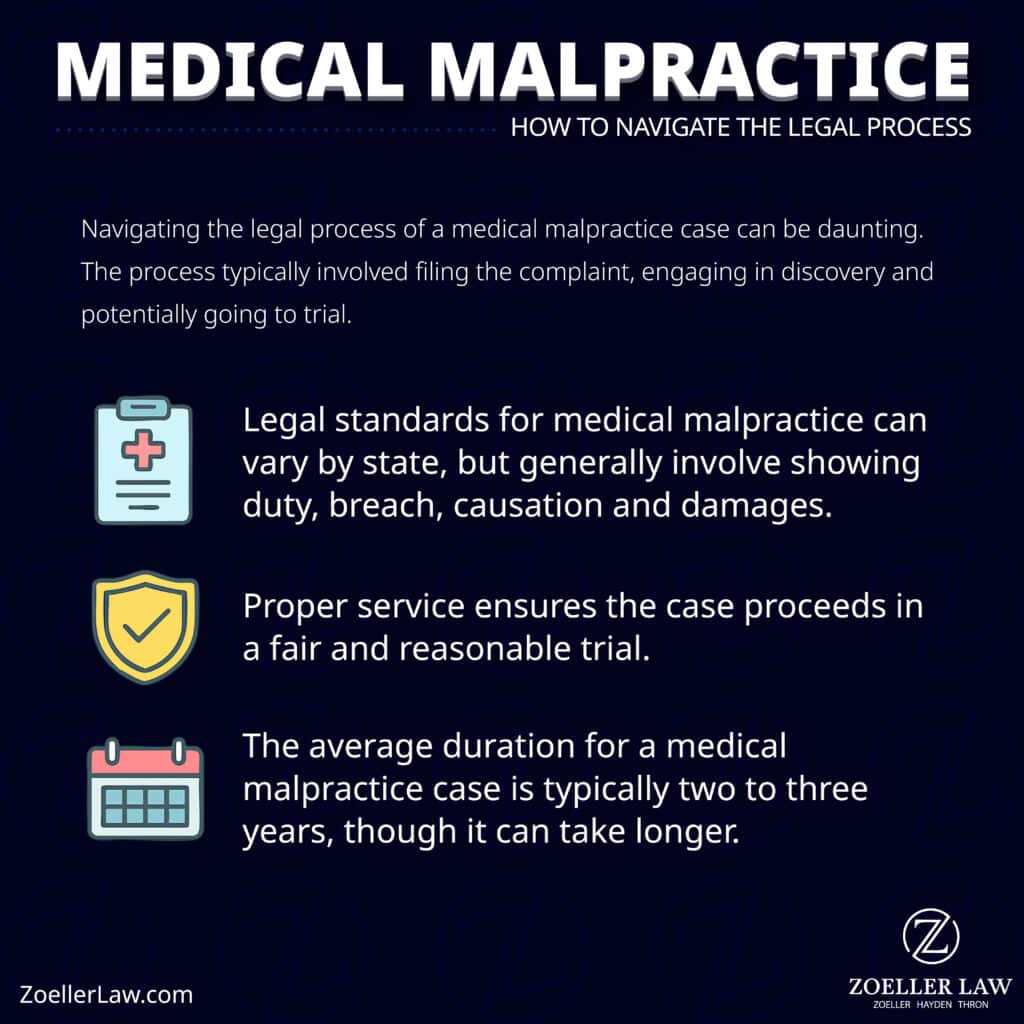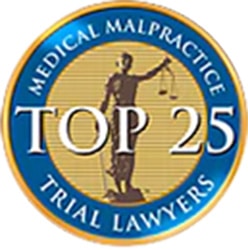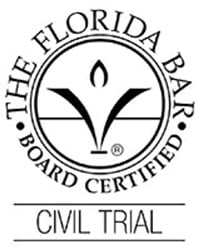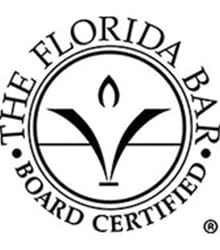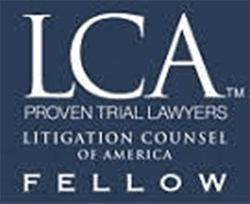Key Takeaways
- Establishing a doctor-patient relationship is essential as it confirms the duty of care necessary to prove negligence in a medical malpractice case.
- Demonstrating medical negligence requires showing that the healthcare provider failed to meet the standard of care, directly linking that negligence to the patient’s injury.
- Having experienced legal representation is crucial for navigating the complexities of the medical malpractice legal process and ensuring adequate compensation for damages.
Establishing the Doctor-Patient Relationship
The cornerstone of any medical malpractice case is establishing the doctor-patient relationship. This relationship confirms that the healthcare provider owed you a duty of care, a fundamental element in proving negligence. Think of it as the foundation upon which your entire case is built. Without this, there’s no duty, and consequently, no breach of duty.
Medical records, appointment receipts, and treatment logs serve as tangible proof that you were under the care of the healthcare system’s medical provider. These documents will show that the healthcare professional was responsible for the treatment received and, therefore, owed you a standard of care.
Imagine walking into a doctor’s office with patient concerns, only to be dismissed without a proper examination – the records of that visit would be pivotal in establishing your case.

Medical Treatment Gone Wrong? Let Us Help You
Medical Treatment Gone Wrong? Let Us Help You
Get your FREE & confidential case review todayDemonstrating Medical Negligence
Once the doctor-patient relationship is established, the next step is demonstrating medical negligence. This involves showing that the healthcare provider failed to meet the standard of care expected in similar circumstances. Medical negligence can manifest in various forms, such as:
- Misdiagnosis
- Surgical errors
- Medication mistakes
- Inadequate follow-up care.
You must prove that the provider’s negligence caused the patient’s injury, resulting in tangible and non-tangible damages.
The Standard of Care
The standard of care is generally defined by what a reasonably competent healthcare provider would do under similar circumstances. Expert witnesses are essential in establishing this, providing context to show how the defendant deviated from these norms.
Defendants, including multiple defendants, often argue that their treatment was consistent with prevailing medical standards, which makes expert testimony crucial for substantiating your claim.
Breach of Duty
A breach of duty occurs when a medical professional deviates from accepted norms of practice, leading to an injury. This could involve a failure to order necessary tests, provide adequate follow-up care, or administer the correct treatment. For example, if a doctor fails to order comprehensive lab tests for serious symptoms, it can indicate negligence. Providing incorrect medication or an inappropriate treatment plan could also suggest negligence. Collecting corroborative evidence from medical records and expert opinions is crucial to substantiate these claims.
Sometimes, the breach is more subtle but equally damaging. For example, inadequate treatment for serious conditions or a failure to reach the correct diagnosis can signal a breach in the standard of care. These lapses can have devastating consequences, leading to prolonged suffering or even wrongful death.
Presenting alternative explanations for the patient’s condition is a common defense strategy, but thorough documentation and expert testimony can effectively counter these arguments.
Key Roadmap: To win a medical malpractice case, you must prove duty of care, negligence, causation, and damages—supported by records, experts, and experienced legal counsel.
| Element | Supporting Points |
|---|---|
| Core Elements | Doctor–Patient Relationship — shows duty of care. Negligence — provider fell below accepted standards. Causation — negligence directly led to the injury. |
| Documentation | Clear medical records, receipts, and treatment logs to prove duty, show what happened, and support damages. |
| Expert Witnesses | Specialists define the standard of care and explain how the provider fell short—often the deciding factor. |
| Causation | Show the injury would not have occurred without negligence, and that proper care likely would have led to a better outcome. |
| Damages | Prove economic losses (medical bills, lost wages, rehab) and non-economic losses (pain, suffering, anxiety). Thorough proof drives value. |
| Legal Representation | Experienced malpractice counsel manages evidence, experts, and insurers—maximizing your compensation potential. |
Questions? Speak with a Florida medical malpractice attorney at Zoeller Law.
Linking Negligence to the Patient’s Injury
Proving that the negligence directly caused the patient’s injury is essential for winning a medical malpractice case. You must demonstrate that this negligence resulted in specific harm to the patient. This involves establishing causation, showing that the patient’s injury would not have occurred without the healthcare provider’s negligence.
To win compensation for medical negligence, it must be proven that substandard medical care caused the injury.
Proximate Cause
Proximate cause is a legal doctrine that connects an individual’s negligent conduct to the resulting injury. For instance, if a healthcare provider fails to monitor a patient’s recovery adequately, it can lead to complications that could have been avoided, thereby establishing proximate cause.
This link is essential for proving medical malpractice, as it establishes the grounds for accountability and compensation.
Different Outcome with Proper Care
To establish causation in a medical malpractice claim, it must be demonstrated that the patient’s outcome would have been different if appropriate action had been taken. For example, neglecting patient aftercare, failing to monitor complications, or not addressing patient concerns can seriously impact patient health and prove medical malpractice.
Showing that an appropriate medical response would have led to a different outcome helps substantiate the claim.
Documenting Damages
Documenting the damages incurred due to medical negligence is vital for substantiating a medical malpractice claim. This includes both economic and non-economic damages. Tangible proof, such as medical expenses, lost income, and emotional distress, is necessary to validate the claim.
Providing thorough evidence is necessary to substantiate the damages resulting from medical negligence.
Medical Expenses

- Hospital bills
- Surgeries
- Medications
- Future rehabilitation needs
Economic damages aim to financially restore the plaintiff, covering both immediate and long-term medical expenses incurred due to the malpractice.
Details like charges for therapies, rehabilitation sessions, and transportation costs for medical appointments should be included in the documentation of all medical expenses.
Lost Wages
Compensation for lost wages accounts for income lost during recovery from medical malpractice. Clear documentation of income loss due to medical negligence substantiates claims for lost wages.
This ensures that the injured party is fairly compensated for the financial impact of their injury, ensuring fair compensation for their losses.
Pain and Suffering
Non-economic damages, such as pain and suffering, can be more challenging to quantify but are equally important. These damages often involve compensation for mental anguish, such as anxiety and depression, caused by the injury. Testimonials or psychological evaluations can help in quantifying non-economic damages, providing a comprehensive view of the impact on the patient’s quality of life.
Stress and anxiety can significantly affect patients and their families as they manage prolonged symptoms.
The Role of Expert Witnesses
Expert witnesses are indispensable in proving medical malpractice cases. Their testimony establishes the standard of care, shows how the defendant deviated from it, and links the negligence to the harm suffered by the patient.
The credibility and expertise of these witnesses can significantly influence the Jury Verdict.
Selecting Expert Witnesses
Choosing the right expert witnesses is crucial for a successful medical malpractice case. An expert’s qualifications, including education, certification, and active engagement in clinical practice, must be verified. Effective expert witnesses should have current knowledge and ongoing experience in their specific medical field relevant to the case. This ensures their credibility and the reliability of their testimony.
Expert Testimony
Expert testimony is vital in establishing the standard of care and demonstrating negligence in medical malpractice cases within the medical community. Testimony from a medical practitioner in the relevant specialty is essential for demonstrating the standard of care.
The lack of proper expert testimony can undermine the credibility of a medical malpractice claim.
Discovery Phase
The discovery phase allows both sides to exchange information and gather evidence during the discovery process. This phase can take anywhere from 12 to 24 months or longer. Key documents typically involved include:
- Medical records
- Hospital billing information
- Clinic notes: Comprehensive documentation of medical treatment is essential; incomplete records can lead to critical details being overlooked.
Settlement Negotiations
Most medical malpractice cases are resolved through settlements rather than going to trial, with over 90% settling. Mediation can facilitate settlement discussions in a less adversarial environment compared to court.
Damage caps may speed up negotiations by providing clear financial limits on potential compensation.

Hurt or Lose a Loved one to Medical Malpractice? Let Us Help You
Hurt or Lose a Loved one to Medical Malpractice? Let Us Help You
Get your FREE & confidential case review todayThe Importance of Legal Representation
Having legal representation from a law firm is crucial to navigate the complexities of the legal system in medical malpractice cases and advocate for patient rights. A medical malpractice lawyer with specialized knowledge is required to handle these cases effectively, which general lawyers may lack, especially when considering the potential legal fees involved.
The legal journey often starts with evaluating the claim in a consultation with an attorney. If the insurance company does not agree to the correct compensation amount, the attorney may consider taking legal action and will likely take the case to the court system.
Legal Expertise
A lawyer’s understanding of both medical and legal issues strengthens the representation of a medical malpractice case. Informed consent requires that patients receive adequate information about treatment options and associated risks. This expertise ensures that the legal process is navigated effectively and that the patient’s rights are upheld.
Handling Insurance Companies
An experienced attorney is essential when handling insurance companies, as they understand the complexities of medical malpractice cases and can advocate effectively for the patient’s rights. Insurance negotiations can be daunting, but an attorney can ensure that the settlement reflects the full extent of damages suffered by the patient, preventing undercompensation.
Common Challenges in Medical Malpractice Cases
Medical malpractice cases come with their own set of challenges. Injuries may not appear immediately after treatment, and mistakes, including medical errors and a medical mistake, may not be disclosed. A medical malpractice suit can arise when persistent or worsening symptoms despite treatment indicate an issue with a medical provider’s diagnosis, including a delayed diagnosis. Establishing a valid claim requires proving that a serious mistake directly caused harm.
The credibility of an expert witness significantly influences the jury’s decision.
Defense Strategies
Defense strategies in medical malpractice cases often involve arguing that the treatment provided was consistent with the prevailing standard of care. Expert witnesses are essential in establishing medical negligence as they provide authoritative opinions on the standard of care and how it was breached.
Effective expert testimony can link the alleged negligence to the harm caused, demonstrating a clear connection between the breach of duty and the patient’s injuries.
Gathering Sufficient Evidence
Gathering sufficient evidence is crucial for a successful medical malpractice claim. This includes collecting a complete set of medical records from all providers involved. Expert witnesses provide impartial evaluations of medical practices to ensure just outcomes in medical malpractice lawsuits.
Comprehensive evidence gathering strengthens the case and supports the successful claim.
Frequently Asked Questions
What is the first step in proving a medical malpractice case?
The first step in proving a medical malpractice case is establishing the doctor-patient relationship, as this confirms that the healthcare provider had a duty of care to the patient.
How do you demonstrate medical negligence in a malpractice case?
To demonstrate medical negligence in a malpractice case, you must establish that the healthcare provider did not adhere to the expected standard of care, leading to harm to the patient. This requires clear evidence linking the provider’s actions or inactions to the injury suffered.
Why are expert witnesses important in medical malpractice cases?
Expert witnesses are vital in medical malpractice cases as they define the standard of care, demonstrate how the defendant breached it, and connect the malpractice to the patient’s injuries. Their testimony provides critical insights that can influence the outcome of the case.
What types of damages can be claimed in a medical malpractice case?
In a medical malpractice case, you can claim both economic damages, like medical expenses and lost wages, and non-economic damages, such as pain and suffering. It’s essential to document everything to support your claims effectively.
How long does a typical medical malpractice case take to resolve?
A typical medical malpractice case usually takes about two to three years to resolve, but the timeframe can extend for more complex cases. Understanding this timeline is crucial for setting realistic expectations.
Related Articles


